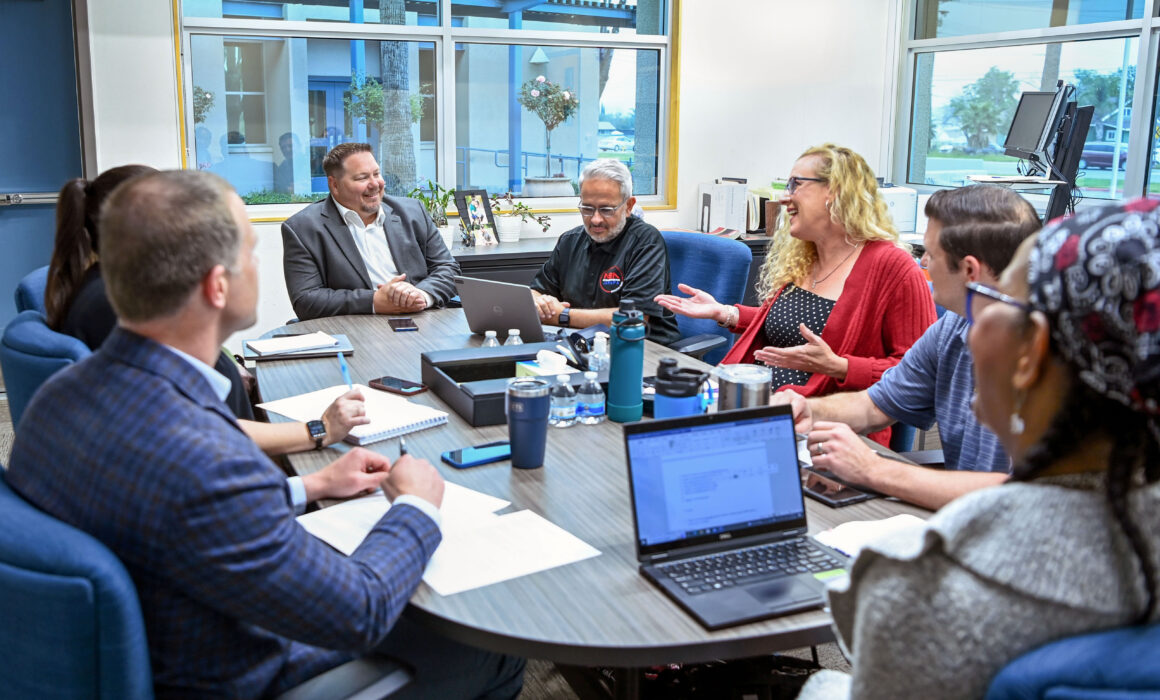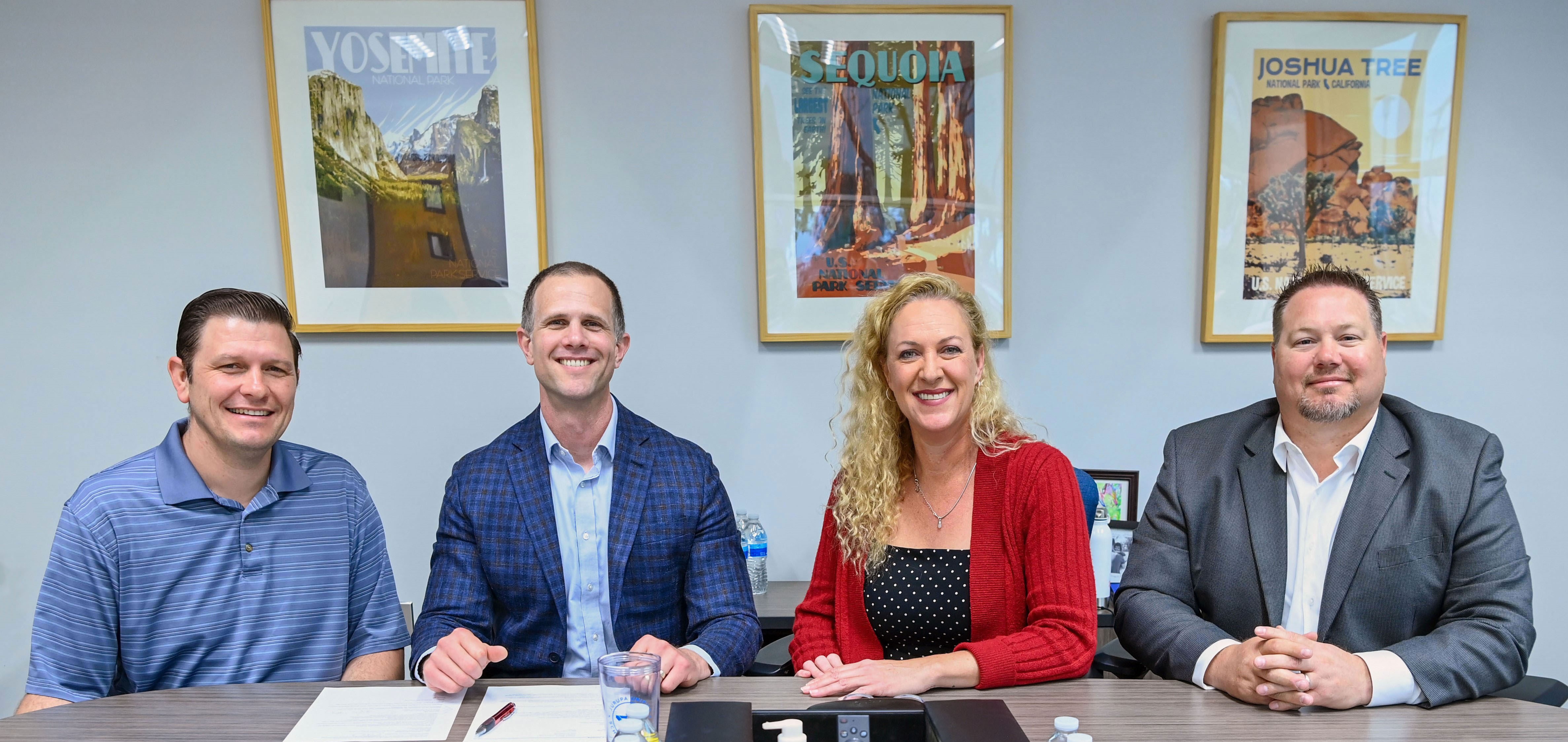
As Jurupa Unified School District (JUSD) continues its community schools journey, Inland Valley school districts can learn much about the importance of effective relationship-building. JUSD has begun implementation of their community schools program in a 20,000-student district in north Riverside County: Six JUSD schools have adopted the model and an additional six are in the application process.
How this has come about is testament to the collaborative relationship between the NEA-Jurupa (NEA-J) chapter and JUSD.
“Our success is a shared one,” said Wendy Eccles, CTA District K Board Member-elect and immediate past-president of NEA-J. “By taking a solutions-oriented approach to problem-solving, we are building a community schools model that will meet the learning and social-emotional needs of the community through our local public schools.”
Beginnings
NEA-J’s partnership with the district has been built and solidified over the years.
In the 2016-2017 school year NEA-J’s member engagement/organizing team began an active campaign to support shared decision-making, and built a local campaign titled ”#AskAnEducator.” It was a challenge to the former model that was largely ignoring the voices of those closest to and most knowledgeable about issues related to students – parents, educators and support personnel.
NEA-J next began educating teachers, district officials and parents about community schools and how their structure differs from simply offering wraparound student services. True community schools are based on a shared decision-making model that determines each school’s needs separately. NEA-J called for a district equity audit and a shift to the community schools model, where services are delivered only after educators, parents, community advocates and administrators have collaboratively determined those specific local needs. In this way every school community can build a model that addresses their specific needs, whether the emphasis is educational, social-emotional, economic or some other locally determined one.
“The relationships we have built with NEA-Jurupa’s leaders sustain and drive so much of our work.” – Daniel Brooks, JUSD assistant superintendent
While COVID closures slowed some elements of that educational evolution, NEA-J and JUSD used that time to work through the challenges school closures created for administrators and educators. Those partnerships and the collaborative problem-solving they required became foundational to the work they would do after the pandemic.
“Having been a member of NEA-Jurupa during my teaching career, I have seen firsthand how important it is to have a strong partnership between the district and NEA-Jurupa,” said Daniel Brooks, now JUSD assistant superintendent. “We have developed an effective and collaborative culture that allowed us to weather many storms during the pandemic shutdown and all that followed. The relationships we have built with NEA-Jurupa’s leaders sustain and drive so much of our work.”
The paradigm shift
JUSD hired a new superintendent Dr. Trenton Hansen upon full return to instruction in the 2022 school year who restructured some district departments to create a Pupil Services Department and Educational Equity Division. The shift toward JUSD’s “Collaboration, Community Schools, and Equity” espoused for years by NEA-J leaders was now met enthusiastically by district leadership. Superintendent Hansen explained, “One of the areas of focus in Jurupa Unified’s vision is employee relations. We have made it a priority to build relationships with NEA-Jurupa’s leaders so that we can keep the lines of communication flowing and work through issues together on a monthly basis. We appreciate the partnership we have with NEA-Jurupa and look forward to our ongoing relationship.”

Talking community schools, left to right: NEA-Jurupa Bargaining Chair and President-elect David O’Rafferty, JUSD Assistant Superintendent Daniel Brooks, CTA District K Board Member-elect and immediate NEA-J past-president Wendy Eccles, and JUSD Superintendent Dr. Trent Hansen.
NEA-J took the lead by passing official school board resolutions in support of community schools which were presented to JUSD leadership. Because of JUSD and NEA-J’s earlier collaborative successes, many of the pieces needed to successfully implement Community Schools (see cta.org/educator/five-steps) were already in place. That included JUSD’s expanded Parent Involvement/Community Outreach (PICO) Department, an ongoing effort with NEA-J input meant to enhance parent feedback and encourage positive interventions to meet site-identified community needs.
Building collaborative structures
To assist in the transition to community schools, NEA-J partnered with JUSD in applying for an implementation grant from the state Department of education – after NEA-J members provided input and support. That partnership included joint meetings to educate NEA-J site reps on community schools and any structural changes.
To meet the goals of the Six Pillars of Community Schools, a Memorandum of Understanding between NEA-J and JUSD codified new committees, including the District Community Schools Council and site-based councils, and made provisions for Teachers on Special Assignment (TOSAs) on each participating campus. NEA-J participates in CTA’s community schools collective work and has made NEA training a priority for community schools TOSAs.
“By bringing all our education stakeholders together to determine how to meet the community’s needs, we are discovering our true transformational power to change our public schools.” – NEA-Jurupa President-elect David O’Rafferty
The mutual goals set at each participating site have also positively influenced contract negotiations. New contract articles that codify site-based councils and new TOSA positions focusing on collaboration and shared decision-making will be determined in the next round of negotiations beginning this spring.
Newly elected NEA-Jurupa President David O’Rafferty is pleased that collaborative relationship building is paying positive dividends for JUSD students. “It’s exciting and rewarding. By bringing all our education stakeholders together to determine how to meet the community’s needs, we are discovering our true transformational power to change our public schools.”
The Discussion 0 comments Post a Comment